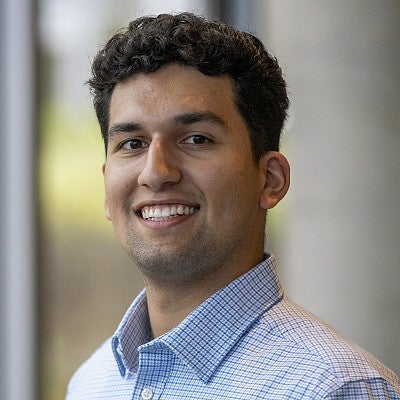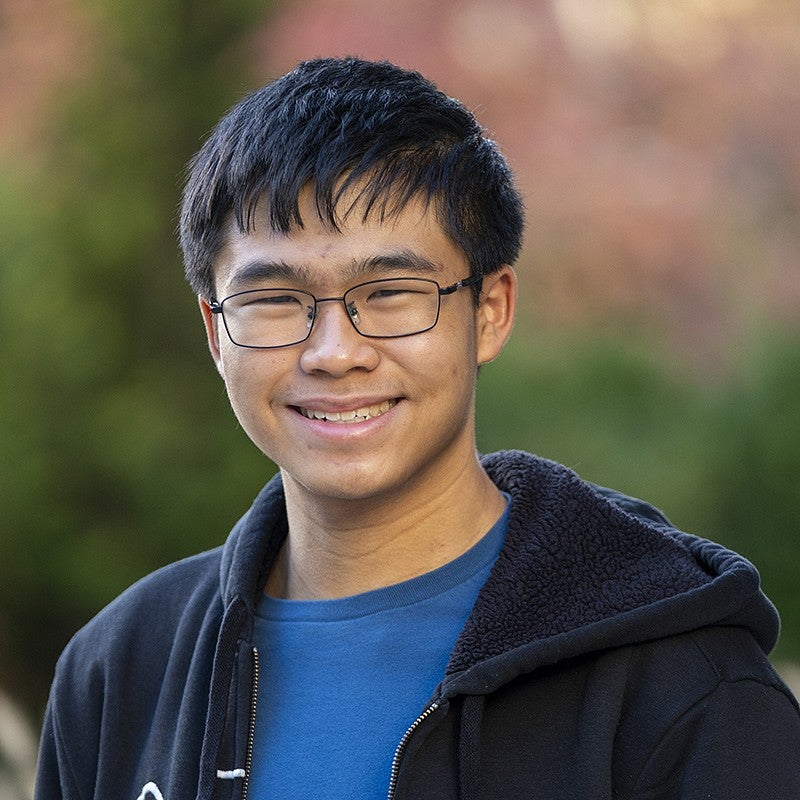University of Oregon: National Science Conference Embraces STEM Diversity for a Vibrant Future
Networking, inspiration, community: these are some of the opportunities University of Oregon students discovered at a recent Portland gathering promoting diversity in the sciences. The largest event of its kind in the US, the annual National Diversity in STEM conference or NDiSTEM supports underrepresented groups in science, technology, engineering, and math (STEM).
The Society for Advancement of Chicanos/Hispanics and Native Americans in Science (SACNAS), which brings the event to a US city each year, is celebrating its 50th anniversary. SACNAS has more than ten thousand members and 144 student and professional chapters in the US.
The October 26–28 gathering was the first in Oregon since the UO started a SACNAS chapter in 2014, says chapter president Harrison Reid, a PhD candidate in chemistry.
“This is the premier event for STEM and diversity,” says Reid. “We’re excited NDiSTEM came to Portland and grateful the university provided funding to help approximately seventy students attend.”
Some presented research posters. Others learned about academic and professional opportunities by networking with students and faculty from universities across the US and scientists from prominent corporations and research institutions.
Students also caught up on the latest scientific buzz, attending presentations by researchers working at the vanguard of their fields. Graduate students frequently attend such conferences, Reid says, but it’s not as common for undergraduates.
At the center of it all: celebrating diversity, supporting budding scientists, and exploring pragmatic, effective ways to advance equity and inclusion in the STEM fields. Oregon Quarterly caught up with four UO students who attended NDiSTEM.
Diego Becerra
Senior, human physiology
Research assistant: Exercise and Environmental Physiology Labs, Bowerman Sports Science Center
Hometown: Medford, Oregon
Scholarships: PathwayOregon, Diversity Excellence
Dream job: trauma surgeon
“One of the best experiences in my college career.”

How was the NDiSTEM conference? “One of the best experiences in my college career. Even though it was on ‘Halloweekend,’ it was more than worth it.”
What could be better than Halloweekend? “Networking with people from places like Harvard, Stanford, Massachusetts Institute of Technology, and the National Institutes of Health. Also the research presentations. It was all a lot of fun.”
How did it transform you? “Seeing the potential for people like me—first-generation college students from minority backgrounds. It was inspirational to see people with similar backgrounds who earned their PhDs and MDs and now work for high-level institutions.”
Clearing the cobwebs: “Sometimes it’s hard to navigate all the possibilities for life after graduation. But they made the fear go away and solidified the possibilities.”
What are those possibilities? “I was just focused on practicing medicine, but I learned that, with an MD-PhD, I don’t have to give up the research.”
Mahboubeh Khoddam
PhD candidate, neuroscience
Hometown: Shahreza, Iran
“I’ve always dreamed of being a scientist, even in elementary school.”

Multidisciplinary journey: While earning bachelor’s and master’s degrees in physics, Khoddam studied nanomagnetites—extremely small magnetic particles—and the neural process that enables animals to navigate using the earth’s magnetic field.
Those interests led to curiosity about neural branching and the University of Oregon’s research in fractals, patterns that repeat infinitely at varying scales. She studies aural fractals with neuroscience professor Margaret Sereno.
Best thing about NDiSTEM: “I would like to do postdoctoral research and I talked to several people who encouraged me. We discussed ideas about developing my career and planning my future.”
Something new: “I was a judge for the NDiSTEM poster presentations. I’ve been a teaching assistant and I’ve presented posters but this was the first time I’ve been a judge.”
Lifelong STEMmer: “I’ve always dreamed of being a scientist, even in elementary school. I remember my father gave me a book about physics for kids. I want to discover something that will help people live better lives.”
Why support diversity in STEM? “When I came to the university, it was my first experience studying in another country. During those first months, I felt alone. Any opportunity to gather and meet other international students—a seminar, conference, or any event—is important. It helps create a supportive community.”
Ethan Nguyen
Sophomore, biochemistry
Hometown: Eugene
Scholarships: Presidential, Summit
“SACNAS helps people who love STEM—but may not have had the same opportunities as others—pursue careers in these fields.”

Current UO research: “I study cycloparaphenylene (CPP), a type of carbon nanohoop, in Professor Ramesh Jasti’s lab.”
What are nanohoops? “A class of molecules joined together in a large ring structure. What I am specifically studying is ways that we can modify carbon nanohoops to tune their fluorescence.”
What was the topic of your poster presentation? “Synthesizing CPPs that fluoresce in ultraviolet light and could someday be used for biological imaging. I’ve presented posters to other students before, but at NDiSTEM I also answered questions from professors and scientists (including one from Merck).”
What was the best thing about the conference? “The camaraderie, plus all the excitement packed in that huge convention center.”
What about networking? “I hope to do clinical work as well as research, so I’m interested in an MD-PhD. I got to speak with students enrolled in MD-PhD programs. Talking in person, you learn things that aren’t on a university’s website. What’s a typical day? What are their favorite things about the program?”
Tell me about SACNAS: “It highlights issues in diversity that are important to the STEM community. SACNAS helps people who love STEM—but may not have had the same opportunities as others—pursue careers in these fields.”
Sof Fox
Senior, marine biology
Hometown: Seattle, Washington
Scholarship: UO Excellence
Honors science thesis topic: Rostanga pulchra, a species of sea slug
“They work to bring about true diversity by supporting underrepresented students.”

Do you really have three minors? Yes: dance, environmental studies, and science communication
What does diversity sound like? “At the NDiSTEM conference, sometimes the speakers would insert Spanish words and phrases. That’s not something I’m used to in an academic setting. My mom is Mexican, and Spanish was my first language—so I appreciated those little moments.”
Practical advantages of diversity: “The STEM fields—and society—benefit from a wider variety of lived experiences, opinions, and knowledge. These allow us to see more perspectives. And they enable us to develop more creative and effective solutions.”
NDiSTEM top three list: “Community and togetherness, graduate school and career expo, and the speaker who talked about climate science in Alaska and collaborations with Native American groups.”
What’s so great about SACNAS? “It fosters a sense of community that can sometimes be difficult to find at large universities and in the big academic STEM disciplines. Also, the groups SACNAS represents have historically been excluded. They work to bring about true diversity by supporting underrepresented students.”

